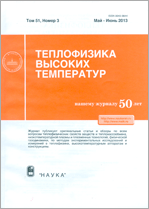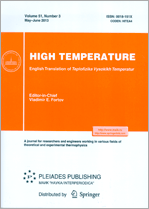|
|
Teplofizika vysokikh temperatur, 2000, Volume 38, Issue 1, Pages 19–23
(Mi tvt2012)
|
 |
|
 |
This article is cited in 7 scientific papers (total in 7 papers)
Plasma Investigations
The mechanism of increase of the thickness of the zone of thermal effect during pulse-periodic treatment of a target by an electron beam
A. B. Markov, V. P. Rotshtein
Institute of High Current Electronics, Siberian Branch of the Russian Academy of Sciences, Tomsk
Abstract:
Based on the results of numerical simulation of temperature fields, the reasons for the growth of the layer thickness of the zone of thermal effect in a target of $45$ steel during pulse-periodic stimulation by a low-energy high-current electron beam in the mode of initial melting are analyzed. It is concluded that the growth of thickness of these layers is primarily caused by the spread of the beam energy density from pulse to pulse and by the presence of individual pulses with a higher-than-average value of energy density. It is shown that the variation of the thermal properties of steel, which occurs during irradiation due to the carbon saturation of the surface region of the target, results in the increase of the thickness of only those layers of the zone of thermal effect which are formed in the region of former melt. The dependence of the target temperature on the number of irradiation pulses is measured and calculated numerically. It is demonstrated that the increase of the target temperature has no noticeable effect on the growth of the thickness of the zone of thermal effect.
Received: 02.04.1998
Citation:
A. B. Markov, V. P. Rotshtein, “The mechanism of increase of the thickness of the zone of thermal effect during pulse-periodic treatment of a target by an electron beam”, TVT, 38:1 (2000), 19–23; High Temperature, 38:1 (2000), 15–19
Linking options:
https://www.mathnet.ru/eng/tvt2012 https://www.mathnet.ru/eng/tvt/v38/i1/p19
|


| Statistics & downloads: |
| Abstract page: | 137 | | Full-text PDF : | 71 |
|





 Contact us:
Contact us: Terms of Use
Terms of Use
 Registration to the website
Registration to the website Logotypes
Logotypes








 Citation in format
Citation in format 
